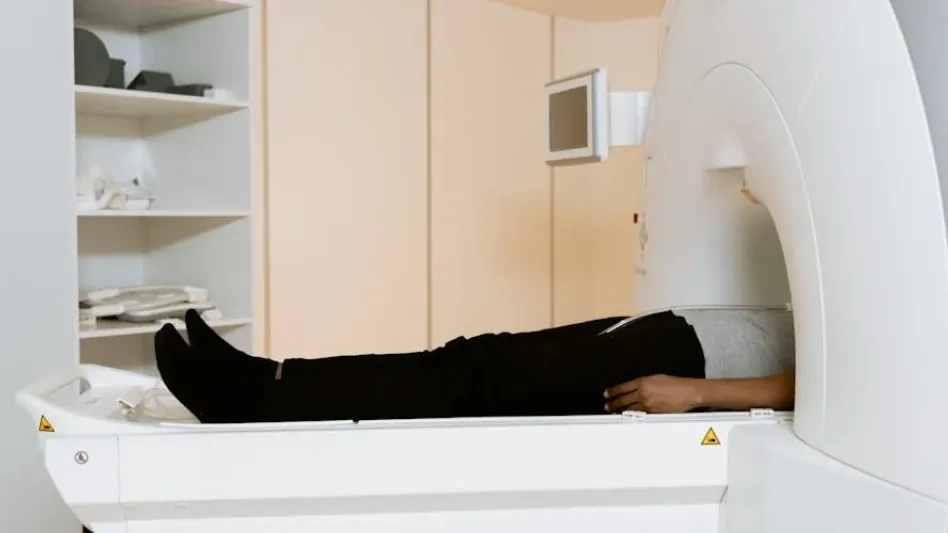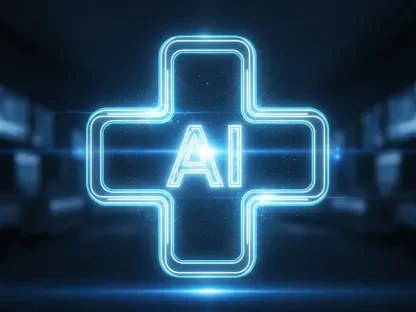Machine learning is significantly changing healthcare, opening up new possibilities for improving diagnoses and treatments.
Central to these advancements are Artificial Neural Networks, which mimic neurological functions to identify features in medical images. Backpropagation allows these networks to learn and grow, enhancing their ability to support practitioners’ decision-making.
The following sections will explore these topics, focusing on groundbreaking tech and the fields it impacts. We will also discuss their value for both practitioners and patients. When looking at how AI is changing healthcare, current practices and methods can expect an exciting future.
The Evolution of Radiology with Artificial Intelligence
Artificial intelligence is revolutionizing clinical imaging by enhancing the efficiency of healthcare professionals and improving their roles within the system. It improves image acquisition and quality for MRI scans, speeding up processes with no loss in quality and extending similar benefits to CTs and PETs. These systems also facilitate the analysis of chest X-rays, have reduced report times from 11.2 days to as little as 2.7 days, and show how automation makes healthcare processes much smoother.
Overall, we can say that the integration of AI is invigorating in the fields of medical imaging in terms of reporting, communication, and patient care. These systems help identify relationships between patient symptoms and appropriate treatment options. They alert practitioners about differences in care, manage work assignments and staffing, and reduce unnecessary radiation exposure. All of the mentioned capabilities bear testimony to their enormous importance within the healthcare system.
Applications Across the Healthcare Landscape
AI is not limited to radiology in healthcare. Instead, it is improving diagnostics, genomics, drug discovery, and delivery. Here’s how:
In pathology, AI enhances tissue analysis through timely diagnosis and increased ability to highlight the finer details in the scans.
In cardiology, EKG results and sonography reports, such as echocardiograms, are examined using proficient algorithms to detect patterns and heart problems with high sensitivity and specificity.
In genomics, advanced programs detect gene mutations quickly and pain-free.
In drug discovery, automation facilitates the effective search for treatments by drug repurposing and clinical trial enhancement.
More on this in the following segments.
10 benefits of AI in radiology
Here are ten essential benefits of integrating intelligent systems in medical imaging:
Early detection: Advanced automation allows us to diagnose diseases earlier and more accurately. This helps prevent complications and significantly improves patients’ health.
Improved prioritization: Diagnostic tools sort scans based on how quickly a clinician needs to review them, from high priority to low priority. This helps provide care more efficiently.
Enhanced accuracy: Abnormality detection is now more accurate than the traditional approaches, meaning a high chance of patient recovery.
Optimized radiation dosing: Some systems use techniques that can customize doses, which assists in minimizing the exposure rates that patients and technicians are subjected to during scans.
Reduced radiation exposure: As mentioned, we now have better imaging tech, which reduces the instances where scans have to be repeated to capture proper images and thus reduces overall exposure to radiation.
Enhanced image quality: Leveraging advanced tools to enhance the quality of medical imaging can aid in detecting irregularities and increasing accuracy rates.
Higher satisfaction: It saves time and efficiency in identifying the problems, and thus, patients are happier with the solutions.
Faster analysis: Automation makes the entire diagnostic process faster, enabling patients to get treatment sooner.
Better access to care: These advances help expand imaging services to as many patients as possible worldwide and aid quick decision-making without involving human input.
Improved reporting: Most of these solutions will provide accurate, structured reports on time with minimal or no human intervention.
AI-Driven Insights in Personalized Patient Care
This section demonstrates how approaches like deep learning help to reshape image segmentation, classification, diagnostics, etc. It also presents the primary aspects of radiomics prognostics and further possibilities for enhancing the healthcare field.
Let’s first explain how great AI is at analyzing vast amounts of data for personalized medicine. When analyzing electronic health records, it has elements that can easily spot patterns of diseases, allowing for preventative treatment. For example, experts observed that AI efficiently predicts medical events and, therefore, plays a preventive role.
Deep learning (DL) is significantly transforming clinical imaging, particularly in areas like image segmentation and classification. It has made analyses more effective and improved the speed and accuracy of examinations, leading to better patient results. However, correct integration of intelligent systems in imaging practices also has some issues that have to be solved if the integration is to succeed.
From diagnostics and imaging to genomics and beyond, the application of AI promises tailored and precise treatments and forecasts. It also enhances decision-making regarding a patient’s condition, drawing relationships between records and scientific information.
But for AI to truly change the system for the better, it must continue to improve the industry´s services without worsening the inequalities that already exist across the globe. Health equity while implementing artificial intelligence seeks equality in patient care services irrespective of ethnicity, status, nationality, gender, disabilities, and whether someone comes from the developing world. It means no disparities in access to health between those who belong to differing classes of economic status, authority, and other forms of influence.
Radiomics: Transforming Medical Imaging into Actionable Insights
The field of radiomics is relatively new, where detailed info is retrieved by analysis of medical images to improve diagnosis and treatment assessment. Although it has the potential to provide accurate information to change medical decision-making, there are problems, such as standardization and validation. As medical imaging data grows in the field of application, the role of machine learning increases and radiomics-based decision-support systems are indispensable for modern medicine even if the standardization problem persists.
AI provides opportunities for early identification of disease trajectory and response to treatment that are not possible with human perception. As observed in oncology applications, radiomics enables the quantitative characterization of molecular phenotypes and their associated survival probabilities.
Nonetheless, the integration of AI within the framework of radiomics is still in the early stages of development. Large-scale data sharing, proper standard operating procedures, and measures to assess those procedures provide validity and reliability to radio mics for precision medicine.
The Future of Breast Cancer Screening
Many countries use double reading for mammography, which means that two radiologists read each image, which, of course, increases the workload. AI can act as an additional pair of eyes, maybe enhance the level of diagnostic confidence, and lessen the burden.
A study conducted in Lancet Oncology showed that the interpretation of computer-aided diagnosis can improve double-reading cancer detection ratios. Overall, it was revealed that AI can enhance the cancer detection rate if it is implemented as the first reader, and minimize the need for multiple human reviews while ensuring sufficiently high accuracy. Despite these innovations, the results observed are only valid on certain AI products and selected groups of people.
Integrating AI into mammography would heighten efficiency and tackle ongoing healthcare challenges. However, its successful application needs further reflection on workflow integration and continuous performance comparison and assessment. Future research should explore the connections between AI implementation, analytical accuracy, overall workload, patient satisfaction, and healthcare costs.
Conclusion
The use of AI in radiology departments assures a complete paradigm shift from increased patient care to effective functioning. Predictive technologies such as deep learning and natural processing language are not only boosting productivity in vital areas but also enhancing the accuracy of diagnosis and general health impacts of patients in different fields, not just in mammography.
On one hand, by being the second reader, AI can alleviate radiologists’ workload and help them focus on more critical tasks, as well as ensure timely patient management. However, to realize these benefits, we need to decide on valid implementation and address potential ethical issues, including but not limited to data privacy and fairness.
As the healthcare landscape evolves, fostering interdisciplinary collaborations will be essential to harnessing its full potential. All while preserving the vital human elements of empathy and nuanced decision-making in medical treatment. The future of this sector lies in a balanced approach. Advanced technology will support the skills of medical professionals. This combination will lead to more personalized and effective treatment strategies.









